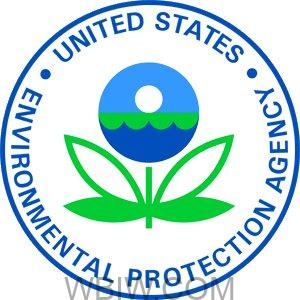
WASHINGTON – Today, the U.S. Environmental Protection Agency (EPA) published preliminary Toxics Release Inventory (TRI) data about chemical releases, chemical waste management, and pollution prevention activities that took place during 2021 at more than 20,000 federal and industrial facilities across the country.
General Information on the 2021 Preliminary Data
The 2021 preliminary data are for substances included on the TRI list of chemicals. These data were reported by facilities in certain industry sectors, including federal facilities, that manufactured, processed, or otherwise used the TRI-listed chemicals above certain quantities during 2021. The data include quantities of such chemicals that were released into the environment or otherwise managed as waste. The data also include the pollution prevention activities initiated by individual facilities during 2021.
The dataset released today contains raw data and does not include any summary or trend analysis. While the preliminary data have not yet been through the complete TRI data quality process, the TRI reporting software facilities used to submit these data (TRI-MEweb) includes many automated quality checks that help prevent common mistakes. EPA is now conducting additional quality checks on the preliminary data, looking at suspected reporting errors, and following up with facilities in what is known as EPA’s “National Analysis data quality calls.” The 2021 preliminary data will be updated periodically to reflect revisions to previously submitted data and late submissions.
The public can use the preliminary data to identify facilities that reported to TRI (for example, to locate facilities in a given ZIP code) and learn which chemicals those facilities manage and in what quantities.
EPA plans to publish the complete TRI dataset in October 2022, which will reflect late submissions, as well as any changes that result from EPA’s National Analysis data quality calls. This dataset will then be used to develop the 2021 TRI National Analysis. EPA expects to publish the TRI National Analysis in early 2023. For details about the TRI data quality process, see the TRI Data Quality webpage.
You can explore the preliminary data by going to EPA’s Envirofacts website and searching for a specific location, industry sector, or facility. You can also download the data files for your own use.
Access the 2021 TRI Preliminary Data
PFAS-Related Information from the 2021 Preliminary Data
This is the second year that TRI data include reporting on per-and polyfluoroalkyl substances (PFAS) added to the TRI by the 2020 National Defense Authorization Act (NDAA). At this time, EPA has received 92 PFAS reporting forms on 46 discrete PFAS from 45 facilities. The preliminary data indicate facilities managed over 1,338,690 pounds of production-related waste of PFAS during 2021.
Following last year’s preliminary data release, EPA reviewed the PFAS data submitted and the types of facilities that reported and that did not report for PFAS. EPA conducted outreach to facilities that had filed Chemical Data Reporting rule reports for the TRI-listed PFAS but had not filed TRI reports for the same PFAS. All facilities contacted claimed that concentrations of PFAS were below the TRI 1% de minimis level that is currently in place for PFAS as their reason for not submitting TRI reports for the PFAS. The de minimis exemption allows facilities that report to TRI to disregard certain minimal concentrations of chemicals in mixtures or trade-name products.
EPA plans to enhance PFAS reporting under the TRI by proposing a rulemaking this fall that would, among other changes, remove the eligibility of the de minimis exemption for PFAS. If finalized, this proposal would also make unavailable the de minimis exemption with regard to providing supplier notifications to downstream facilities for PFAS and certain other TRI chemicals.
Because PFAS are used at low concentrations in many products, the elimination of the de minimis exemption would result in a more complete picture of the releases and other waste management quantities for these chemicals.



